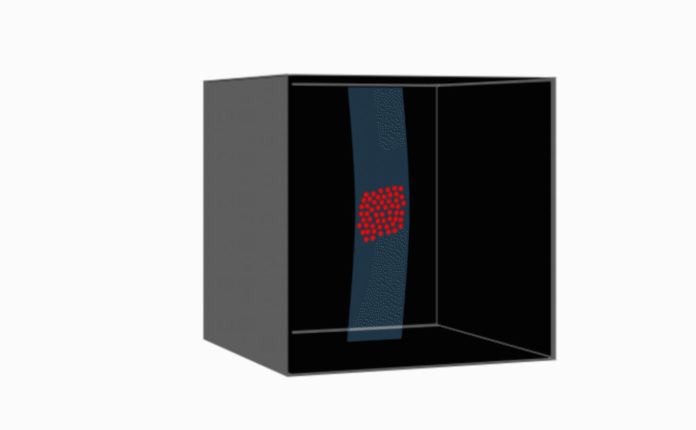Now we can create and detect photons in vacuum.
A method for making something out of nothing has been proposed by two theoretical physicists from Dartmouth College’s Department of Physics.
Hui Wang and Miles Blencowe, for example, claim that photons, the particles that make up light, can be produced from a vacuum. In a paper published in the journal ‘Nature Communications Physics,’ they explain the concept.
Absolute vacuum does not exist in quantum physics, but it does include electromagnetic waves and a ‘quantum foam’ of particles that appear and disappear from our world in fractions of a second. Some physicists consider the vacuum to be a ‘physical matter’ that may be charged and discharged with energy.
“In an everyday sense, the findings seem to surprisingly suggest the ability to produce light from the empty vacuum,” says Miles Blencowe, the Eleanor and A. Kelvin Smith Distinguished Professor in Physics at Dartmouth and the study’s senior researcher.
“We have, in essence produced something from nothing; the thought of that is just very cool.”
A vacuum is defined as the absence of matter, light, and energy in classical physics. In quantum physics, however, the vacuum is not so empty; it is filled with photons that come and go. This light, on the other hand, is nearly hard to quantify. That’s exactly what the researchers aimed for: a practical approach to make and detect photons in a vacuum.
A postage stamp-sized synthetic diamond comprising nitrogen-based light detectors is hung in a super-cooled metal box that forms a vacuum in Wang and Blencowe’s experiment. The membrane accelerates at an incredible velocity, similar to a tethered springboard.
In Hui Wang’s words: “the motion of the diamond produces photons. In essence, all you need to do is shake something violently enough to produce entangled photons.”
This is the first study to look into using numerous photon detectors (the diamond flaws) to boost detection sensitivity and intensify acceleration. The diamond’s oscillation also enables the experiment to take place in a controlled environment at high speeds.
“The photons detected by the diamond are produced in pairs,” Hui continues, “this production of paired, entangled photons is evidence that the photons are produced in vacuum and not from another source.”
However, since the light observed is microwave-frequency, it is not visible to the naked eye. However, Blencowe and Wang hope that their work, like other theoretical studies, will contribute to a better understanding of physical forces. The research could help throw experimental light on Hawking’s prediction of black hole radiation, in particular.
Although the suggestion to detect light in a vacuum has no immediate use, the study team thinks that it will contribute to society’s understanding of physical forces in the same manner that other theoretical research has. Through the lens of Einstein’s equivalence principle, the findings may help cast experimental light on Hawking’s prediction for radiating black holes.
While Hawking was explaining how light may escape a black hole’s gravitational pull in the early 1970s, Canadian scientist William Unruh claimed that a fast enough accelerated photodetector could ‘see’ that light in a vacuum. Now, the two Dartmouth scientists have taken it a step further by describing a method for producing and detecting that previously undetectable light.
“Part of the responsibility and joy of being theorists such as ourselves is to put ideas out there,” concludes Blencowe. “We are trying to show that it is feasible to do this experiment, to test something that has been until now extraordinarily difficult.”
You were reading: Physicists propose a method to create ‘something’ from nothing
